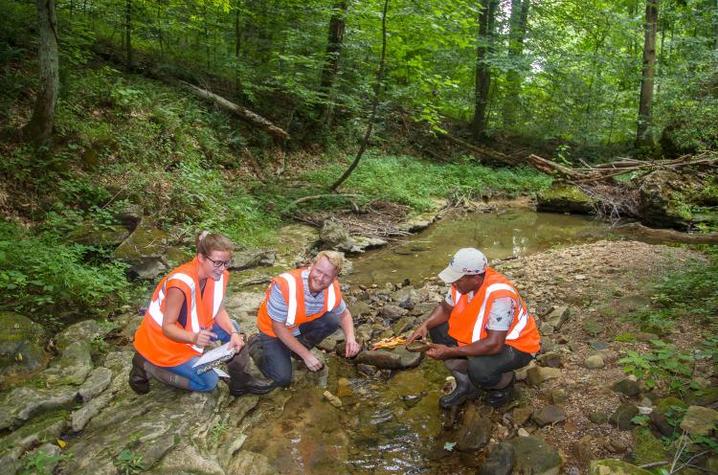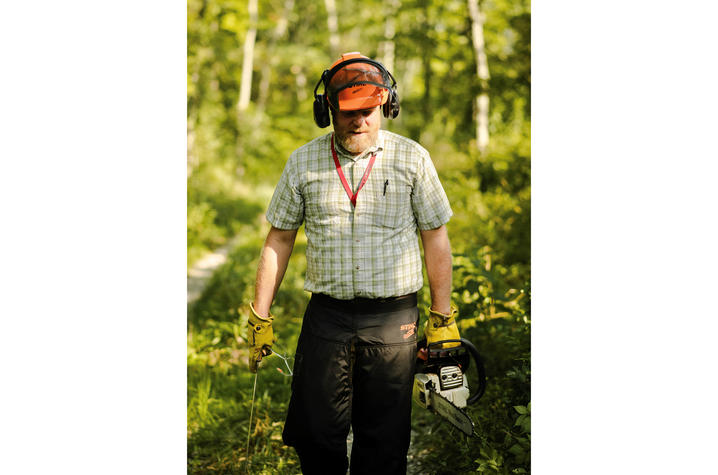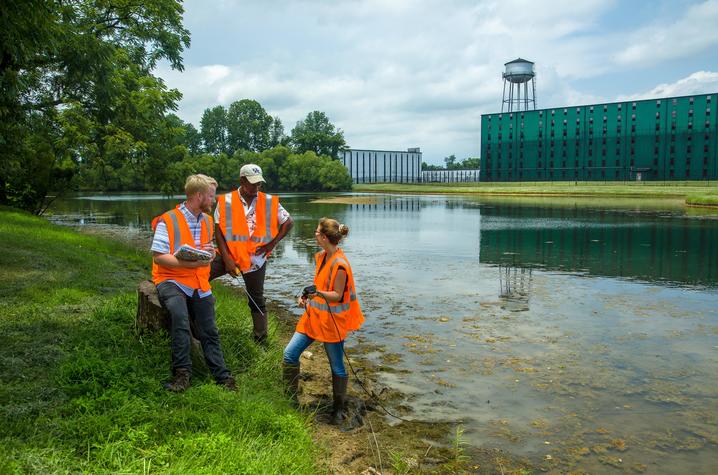UK’s James B. Beam Institute Prioritizing Environmental Stewardship
LEXINGTON, Ky. (Sept. 14, 2020) — Water is essential to bourbon. Fresh, clean water is what allows the starch in the grains to reach their full potential. As a result, many distilleries were built near natural water sources. Kentucky has plentiful, naturally filtered limestone water in many parts of the state, and stewarding those watersheds is a key priority for the James B. Beam Institute for Kentucky Spirits at the University of Kentucky.
UK scientists are partnering with Beam Suntory to study water sustainability. This includes research at the James B. Beam Distilling Co. in Clermont and Maker’s Mark Distillery in Loretto. Investing ahead of demand, Beam Suntory was expanding and committed to ensure that the foundation of their product — water — was the best it could be for use in their products, and for the surrounding community.
Lindell Ormsbee is a faculty member in the UK Department of Civil Engineering and the director of the Kentucky Water Resources Institute, housed in the office of the UK Vice President for Research. He’s been involved with the research from the start.
“The bourbon industry mixes their grains with water to produce mash. They also use it in various other parts of the distillation process, and at the end, they typically use water to cut or dilute the alcohol from their barrels to a specific proof. Some of that's stipulated, based on law and other types of criteria,” Ormsbee said. “They need very clean water, not only from just a health perspective, but they also need to have water that's not going to impact the taste and odor of their product.”
While the collaborative research between Beam Suntory and the Beam Institute looks at issues with specific distilleries, it also looks at how its operations as well as outside activities impact the local watershed and how to ensure it is properly cared for.
“I think more and more in our society we're demanding that our products have a sustainable element to them, and so we're working with the Kentucky bourbon industry to find ways that we can sustain the industry and that we can sustain our natural resources,” said Amanda Gumbert, water quality extension specialist for the UK College of Agriculture, Food and Environment. “They know it's an integral element to the work that they do, and they look for ways to be more sustainable.”
Navigating the delicate relationship between distilleries and the surrounding community is important so that everyone can become good environmental stewards. Jason Nally serves as the environmental champion at Maker’s Mark. He believes the environment and water sustainability are important throughout all Beam Suntory’s brands.
“We are trying to make sure we use each drop of water respectfully, and that as rain falls onto our property, the vegetation and soil it encounters is in the best condition possible,” Nally said. “Our partnership with UK grants us access to water scientists, forestry, agronomy, agriculture and horticulture experts. Reaching out to subject matter experts makes us even more confident that we are making the best decisions for our property and this watershed at all times.”
As part of the ongoing project, UK students have had the opportunity to participate in hands-on research. Students in Carmen Agouridis’ stream restoration course were able to go into the field and put their learning into action.
“My students take a lot of what they learn in class and apply it in a real-life setting,” said Agouridis, associate dean for instruction in the UK College of Agriculture, Food and Environment. “One thing Beam Suntory was concerned about was extra sediment, and so we’ve been working to help solve that issue. I really enjoy the way they allow us to be innovative and really allow our students to be part of identifying and solving real problems.”
Austin Gilbert is a civil engineering graduate student from Fayetteville, Georgia, who has been involved in the project. “This research helped me to see the actual aspects of erosion and issues that can rise in streams,” he said. “(It helped me) try to figure out what that’s doing to water quality and what it’s doing to the natural environment around it and then to brainstorm ways we can start to combat these issues.”
Gilbert and several other students have spent hours walking miles of streams. They’ve also been involved in stakeholder engagement. They’ve planned informational sessions and demonstrations to talk about what they are doing in the watershed.
“One of the things we’ve tried to do is reach out to local residents and neighborhood organizations,” Gumbert said. “It’s still a rural area. Everyone knows everyone else, so there’s a lot of word-of-mouth communication that goes on. We want to bring the local residents in and let them see what our students have been working on and let our students interact with them. Ultimately, they (the local residents) are the ones who are impacted directly by anything that goes on in the watershed.”
This project is one way the James B. Beam Institute for Kentucky Spirits at the University of Kentucky is bringing all the elements of bourbon production together and studying issues that impact the industry.
“This is the kind of collaboration the Beam Institute was made for,” said Seth DeBolt, institute director. “We are constantly working to increase the longevity and the economic development of the spirits industry. Projects like this enhance the way we meld the research, education and extension missions of the university in a way that benefits everyone.”
The James B. Beam Institute for Kentucky Spirits at the University of Kentucky was created to ensure welfare and prosperity of Kentucky’s spirits industry through teaching, research and outreach. For more information about the institute, visit http://beaminstitute.ca.uky.edu.
As the state’s flagship, land-grant institution, the University of Kentucky exists to advance the Commonwealth. We do that by preparing the next generation of leaders — placing students at the heart of everything we do — and transforming the lives of Kentuckians through education, research and creative work, service and health care. We pride ourselves on being a catalyst for breakthroughs and a force for healing, a place where ingenuity unfolds. It's all made possible by our people — visionaries, disruptors and pioneers — who make up 200 academic programs, a $476.5 million research and development enterprise and a world-class medical center, all on one campus.







